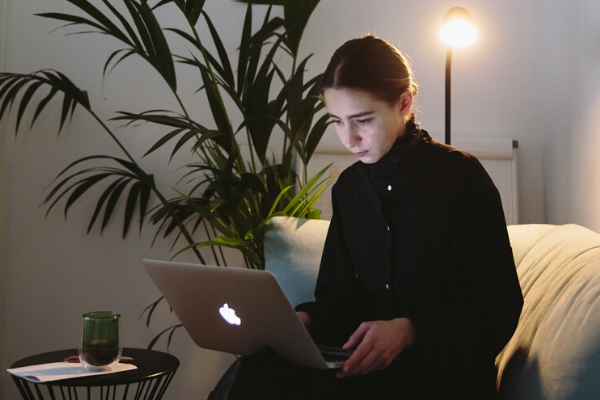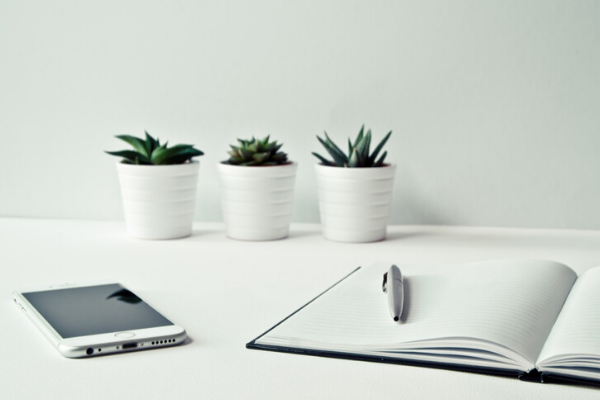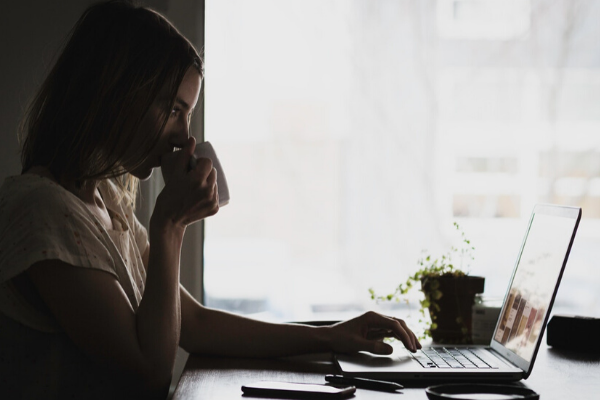How to Meditate at Work
We are only three months into a brand-new decade and have already been bombarded with the realisation of enormous changes to the political landscape, and a global pandemic that has sent the stock markets plummeting.
For many of us, being whipped up into a media frenzy is enough to have our cortisol levels and heart rate rising, and this is often all before we have stepped foot into the office to begin a day’s work.
Of course, our hours in the office can too, present a completely different set of tasks that induce feelings of stress and anxiety. It should come as no surprise that this study found that 85% of UK adults admit to experiencing stress, with work being cited as one of the top contributors.
Deadlines, workloads, management practices, clients and schedules all play a role in day-to-day stress of the modern office, and while it is often the case that we have little control over all of these elements, there are steps that we can take in our working day to manage the way that we react and respond to the stress we feel;
Meditation.

How does meditation work, at work?
Although a practice widely overlooked at work, meditation is not a new concept when it comes to strategies that help us manage our perspective and deal with the way that we respond to stressful situations.
In fact, when you study the core principles of meditation, they are perfectly aligned with managing the stress of a modern day office, and an ‘always-on’ age. It’s extremely easy to become so immersed in the fast pace of daily life, that we have stopped being conscious of our choice to respond, our breath, our awareness, our presence and the prospect of complete clarity of mind.
But all of the above enable us to become more present, focused and intuitive, leading to better decision making, improved relationship building, higher rates of productivity and perhaps most important, improved self-worth, self-value and taking absolute pride and ownership of your work.
Changes to our mindset in our professional lives, improve relationships with colleagues and clients, empowering us to build positive associations with our work and contributing to workplace environment and culture.
As a business that teaches company’s how to build successful and enriching company cultures, encouraging individuals to use meditation as a method for managing stress and becoming more present and aware is crucial. With this in mind, we wanted to share with you the various ways that meditation and mindfulness can be practiced at work.
How to practice meditation at work
Below you will find a number of ways that you can build in meditation and mindfulness into your working day, improving your focus, mood and productivity.
Use a meditation app for guidance
There are a wide variety of meditation apps. Rather than pick one and try to force yourself to align with it, we recommended downloading a number of free apps until you find one that works for you. If you are new to meditation, using one that offers guided meditations, aiding you in becoming comfortable with the practice until you feel disciplined enough to meditate without an aid.
This is entirely personal, it might take days, months or even years, but there is no hard and fast rule when it comes to meditation.
Before getting started on your tasks, take five minutes to practice breath work
Focusing on your breath is one of the most effective ways to practice mediation, clear your mind and bring yourself into the present moment.
Close your eyes and take, rhythmic, rolling breaths. Acknowledge all of the senses involved with the act of taking a deep breath in through your nose; the air entering your body, your lungs filling and chest expanding, before holding the breath before a slow and deliberate exhale. The sounds and physical senses that comes and goes with breathwork encourage a clear mind and sharp focus.
This simple technique is perfect for beginners or those that need to ground themselves throughout the day and can be practiced at your desk, while stepping away to make a coffee, or even just before a meeting if you can head down a few minutes before everyone else.

Take regular breaks throughout the day to align yourself with your surroundings
Just like the importance of breath work, taking breaks throughout the day to attune yourself with your surrounding and environment can encourage your body to relax and relive feelings of stress and tension, making you more focused, engaged and productive.
This is best practiced while sat down. Begin with the sensations of your body in the sitting position, any pressure, tension or sensations you feel, starting with your feet and working your way up to your head. Take a moment to acknowledge your breathing and heart rate.
Next, focus your attention to the external surroundings, making a conscious effort to recognise each sound that you can hear, and any sensations caused by the daily workings of the office.
There is nothing for you to act on in these moments, this meditation is about attuning yourself with your surroundings and accepting them, helping you to relax.
Practice ‘mindful’ eating at lunch
A recent study by BUPA found that around 33% of us eat our lunch at our desks and 43% saying they are too busy to take a break.
Not only is this approach detrimental to your productivity, it can also lead to burn out. An alternative approach to leave you feeling relaxed and reenergised is to practice a mindful experience at lunch.
In doing so you bring your awareness to your meal, taking note of the look of the food, how it smells, its texture and taste and the sensations of chewing and swallowing. In the act of eating slowly and mindfully, you become present in your meal, eating slowly and deliberately.
Not only does this afford you a productivity refresh, but it also prevents you from overeating or eating too quickly, causing digestive issues.
Refresh yourself with a walking meditation
Mediation isn’t limited to a sitting or laying position, you can deepen your awareness and practice becoming present while being active. In fact, the rhythmic motion of walking and running is known to encourage people to go into a meditation.
By focusing on your breath work, inhaling deeply and paying attention to the sensation of walking from your feet to your hips, you can benefit from fresh air and mediation, meaning that when you return to your afternoons task list you are refocused and reenergised.
The extra benefit of moving while meditating, is that it releases tension that the body has been holding on to. So pay close attention to how your morning schedule has made you feel and make sure you plan in a lunch time walk to prevent the tension impacting your afternoon.

Experiment with mantras
There are varying ways of adding more purpose to your meditation, such as repeating mantras, or using visualisation techniques.
Using concise and meaningful mantras can help to cement the focus for the day and set your intention. Anything from ‘relax’, to ‘I am present, I am focus’, or anything that is better aligned with your intention, simply repeat while focusing on your breath whenever you feel the need.
Mantras work particularly well before important meetings, pitches or presentations when you need some extra self-belief, focus and a sense of calm.
For further information on adopting meditation at work, contact me about Mindfulness at Work workshops, or download my free ebook, Mindfulness at Work.





